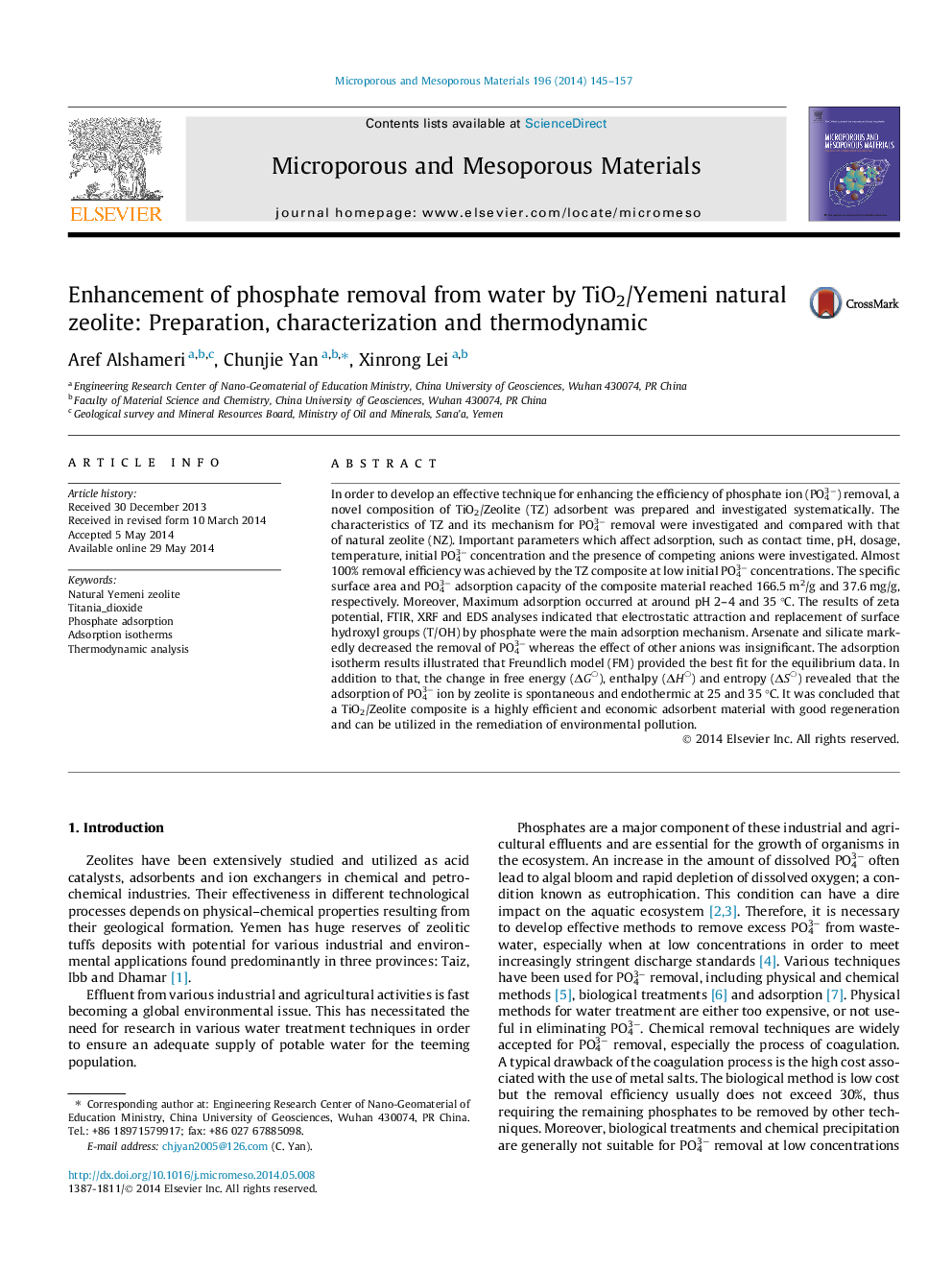| کد مقاله | کد نشریه | سال انتشار | مقاله انگلیسی | نسخه تمام متن |
|---|---|---|---|---|
| 72999 | 49041 | 2014 | 13 صفحه PDF | دانلود رایگان |

• A novel TiO2/Zeolite adsorbent for phosphate removal was prepared and investigated.
• TiO2/Zeolite performance for PO43− removal approached 100% at low concentrations.
• Electrostatic attraction and replacement of (T/OH) were the main adsorption mechanism.
• The highest adsorption capacity was obtained at 35 °C and around pH of 2–4.
• Various adsorption models and regeneration calculations were applied.
In order to develop an effective technique for enhancing the efficiency of phosphate ion (PO43−) removal, a novel composition of TiO2/Zeolite (TZ) adsorbent was prepared and investigated systematically. The characteristics of TZ and its mechanism for PO43− removal were investigated and compared with that of natural zeolite (NZ). Important parameters which affect adsorption, such as contact time, pH, dosage, temperature, initial PO43− concentration and the presence of competing anions were investigated. Almost 100% removal efficiency was achieved by the TZ composite at low initial PO43− concentrations. The specific surface area and PO43− adsorption capacity of the composite material reached 166.5 m2/g and 37.6 mg/g, respectively. Moreover, Maximum adsorption occurred at around pH 2–4 and 35 °C. The results of zeta potential, FTIR, XRF and EDS analyses indicated that electrostatic attraction and replacement of surface hydroxyl groups (T/OH) by phosphate were the main adsorption mechanism. Arsenate and silicate markedly decreased the removal of PO43− whereas the effect of other anions was insignificant. The adsorption isotherm results illustrated that Freundlich model (FM) provided the best fit for the equilibrium data. In addition to that, the change in free energy (ΔG○), enthalpy (ΔH○) and entropy (ΔS○) revealed that the adsorption of PO43− ion by zeolite is spontaneous and endothermic at 25 and 35 °C. It was concluded that a TiO2/Zeolite composite is a highly efficient and economic adsorbent material with good regeneration and can be utilized in the remediation of environmental pollution.
Figure optionsDownload as PowerPoint slide
Journal: Microporous and Mesoporous Materials - Volume 196, 15 September 2014, Pages 145–157